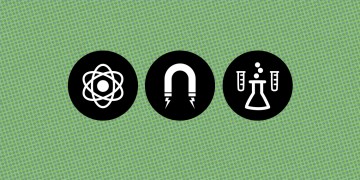
In Pursuit of (Ig) Nobility: The Ig Nobel Prize
What is so noble about receiving an award? What if it is an Ig Nobel award? This article reviews what Ig Nobel awards are, how they are determined, and discusses some research topics that were awarded the Ig Nobel awards this year.

10 Tips and Tricks for Designing Multicolor Flow Cytometry Panels
Multiplexing an assay comes with its own complications in addition to the benefits it affords. Designing multicolor panels for flow cytometry analysis entails several considerations for a successful outcome. Here is a list of tips that can help you succeed in setting up and running a multicolor flow cytometry panel.

How to Minimize Contamination in qPCR Experiments
Are you using ethanol to prep your bench for qPCR? Watch this episode to find out why that might be a bad idea. We’re sharing seven tips for minimizing contamination of qPCR experiments.

Crows Do Fear the Reaper
Crows have been shown to associate dead bodies of their own kind with danger, and are also known to remember the faces of individual humans who have threatened them.

What Academic Researchers Can Learn from Small Biotechs about Antibody Validation
Academic labs don’t have the money to do full-scale validations of antibodies. What tricks can small biotechs teach them about validation? Find out.

A Semi-Automated Quantitative PCR Approach to Assess Differential Anti-Apoptotic Gene Expression Patterns Associated with Prostate Cancer Progression
Gene expression analyses become complicated and extremely time consuming when large numbers of genes need to be analyzed. Here we present a semi-automated qPCR workflow with reduced setup and processing times using Bio-Rad’s PrimePCR™ Panels and CFX Automation System II Plate Handler.

Scientists Image Metabolites Secreted by Single Cells
Bacteria secrete small molecules for purposes that range from communication to self-defense. These processes are extremely challenging to study in situ because it is nearly impossible to link secreted molecules to specific populations of bacteria let alone individual cells in their natural environment. By combining mass spectrometry-based imaging with fluorescence in situ hybridization (FISH) scientists at the Max Planck Institute for Chemical Ecology are able to image secretion patterns of antibiotics and map them onto the FISH profile of the bacterial population that underlies it.

Can Cancer Cells be Programmed Back to Normal?
In a recent study published in Nature Cell Biology, researchers at the Mayo Clinic described a way in which cancer cells could potentially be programmed back into normal cells. Their findings were stimulated by the fact that proteins that hold cells together, or adhesion proteins, interact with the Microprocessor complex, which mediates the production of microRNAs (miRNAs).

Four Tips for Developing a Sample Prep Protocol for SDS-PAGE or Chromatography
From making sure that your lysis buffer is compatible with your protein quantitation method to advice on when you do and don’t have to worry about proteases, we share helpful tips for developing a sample preparation protocol.

Five Tips for Picking the Right Cell Disruption Method for Protein Analysis
Sonicator or freeze-thaw? Detergent or enzymatic lysis? Find out how to pick the right cell disruption method for your experiment.
